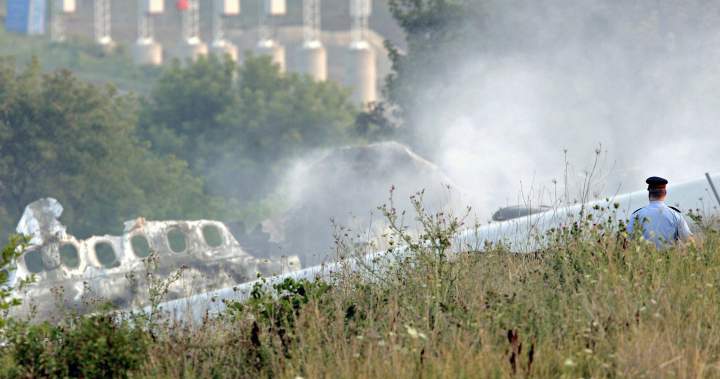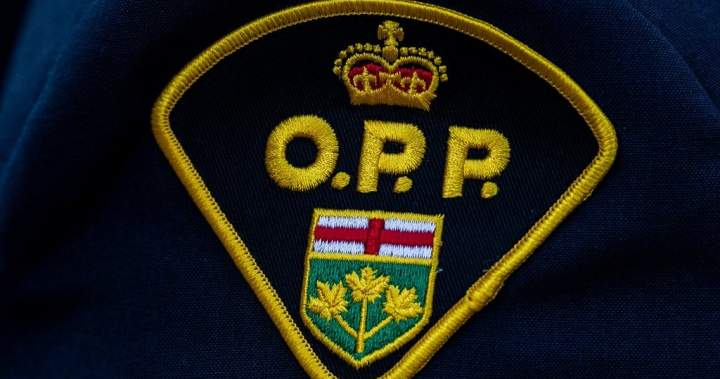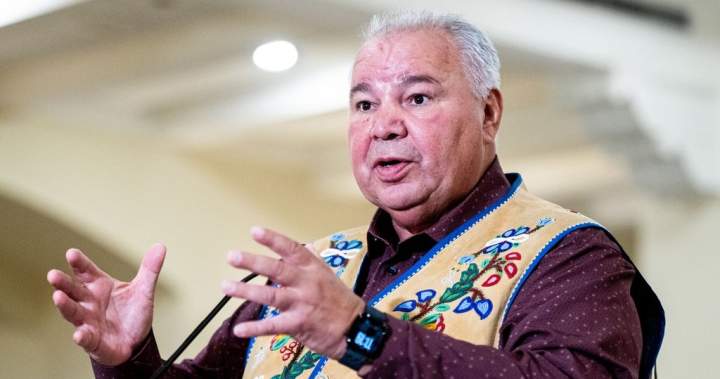Uncategorized
Survivors recall frantic escape 20 years after Air France crash in Toronto

Lisa Platt was returning to Toronto with a French exchange student on Air France flight 358 on Aug. 2, 2005.
At 15, Platt hadn’t travelled by air very much at that point and was enjoying the trip.
“We were all excited, wearing headphones, listening to the same music. It was a great day,” said Platt.
Eddie Ho, age 19, was a business student from South Africa attending Queen’s University in Kingston. He also said the trip from Paris was memorable.
“The service was great, the food was great, it was actually a very enjoyable flight,” Ho said.
But it was a flight that ended with the plane going up in flames after a disastrous landing, even though it initially appeared to passengers that the pilots would be able to stop on the runway 24L at Pearson International Airport in Toronto.
“I felt a huge impact like you were on a roller-coaster,” said Platt.
“The plane was making its way down the runway and everybody started clapping. Nobody knew what was going to happen after that,” said Ho.
Lisa Platt and Eddie Ho are pictured in downtown Toronto in July 2025.
Sean O’Shea/Global News
According to the aviation investigation report by the Transportation Safety Board of Canada, weather conditions for the landing included “very dark clouds, turbulence and heavy rain.”
“The runway was covered with water, producing a shiny, glass-like surface,” the report continued.
The Air France Airbus A340 touched down “3,800 feet down the 9,000 foot runway” and was not able to stop, crash investigators concluded.
“It departed the end of the runway at a groundspeed of 80 knots (148 kilometres per hour) and came to rest in a ravine,” the TSB report said.
Seconds after the plane came to a stop, fire was observed out the left side of the aircraft and smoke was entering the cabin, the report said.
For passengers, including Ho and Platt, it was clear they needed to get out of the plane immediately.
“Some people were reaching up for their bags and others who were in the middle of the plane, they knew what was going on, and they were climbing over seats pushing people out,” said Ho, who was seated in the economy cabin just behind the business class section.
When Ho went to the nearest exit to get out, he discovered that the emergency evacuation slide hadn’t deployed. He faced a choice: jump to the ground and risk injury or look for another way out.
“I decided not to risk the jump; I ran to the front to the first exit on the left,” he said.
At the second emergency exit, Ho said he faced another challenge.
“The chute came out, but it did not inflate. But at that point I had no other choice,” said Ho, who jumped and sustained minor injuries.
“There were passengers near me who broke their hips, broke their legs, had much more serious injuries.”
Platt, seated with her friend toward the rear of the plane, had an easier time escaping.

Get daily National news
Get the day’s top news, political, economic, and current affairs headlines, delivered to your inbox once a day.
“My shoe popped off. I remember grabbing my shoe with my hand thinking, ‘I’m going to need this,’” Platt said.
After descending on the escape slide, Platt observed a passenger concerned about what he left behind.
“I remember a guy in a brown suit worried about his luggage at the bottom of the chute, and I thought, that’s not the right time to worry about your luggage,” Platt said.
Police survey the site where an Air France Airbus A340 jet slid off the runway and crashed at Toronto Pearson International Airport in Toronto, Wednesday, Aug. 3, 2005. All 309 passengers and crew aboard the Air France jet survived the crash Tuesday afternoon.
David Duprey/AP via CP
Ho, Platt, and others made it out of the plane, but weren’t out of danger yet.
“My first thought was, we have to get away from the plane because it’s going to explode,” he said.
“We need to get away.”
Ho said he and another man assisted an injured passenger lying on the ground.
“(We were) carrying him, just trying to drag him away from the plane,” said Ho.
About the same time, Ho pulled out his Canon Powershot digital camera and quickly grabbed a few frames of the burning airplane as he moved away. At the time, smart phones hadn’t been invented and few people carried cameras every day.
“I remember taking a couple of shots, I didn’t aim or do anything, I just took it out and snap, snap,” said Ho. One of his pictures was awarded the 2006 Canadian Press Picture of the Year in the news category.
Eventually, Ho was transported to the Pearson air terminal where he joined other plane crash survivors who were grouped together.
“They actually thought it was a terrorist attack, so they didn’t let any passengers out,” Ho said.
Even though Ho and Platt had abandoned their belongings in the aircraft, that fact didn’t prevent customs officers from wanting to know what they had brought back from Europe.
“I still remember the customs folks, CBSA (Canada Border Services Agency) came out and asked me multiple times: ‘Do you have anything to declare,’” and insisted he sign a declaration card.
“I had nothing to declare,” Ho said.
Platt said she, too was asked to make a declaration.
“They were just doing their jobs,” she said.
With news of the Air France crash making headlines around the world, Platt wanted to let her family know she was all right.
She reached her mother by telephone.
“I was like, ‘Mom, it’s me, it’s Lisa,’ recalling how her mother appeared surprised and probably relieved to hear her voice.
Late that evening, Platt and others were allowed to leave after the airline had accounted for all the passengers and crew members.
“We were pretty sure there were fatalities,” said Ho, recounting what he felt in the hours after the crash.
Lisa Platt shows a tattoo on her ankle of AF 358, the number of an Air France flight that crashed at Toronto Pearson International Airport on Aug. 2, 2005.
To the surprise of many who were onboard, all 297 passengers and 12 crew members had made it out safely.
Everyone survived.
But quickly, many passengers would start dealing with the aftermath.
“It was exhausting, I think it was the next day when it all hit me,” said Platt.
In the months and years ahead, the survivors would come to terms with what they had gone through that afternoon in the driving rain and lightning at the end of the runway.
Ho and Platt experienced post-traumatic stress disorder (PTSD) and sought help from therapists for about a year.
“I remember I started to get nightmares, and I slowly didn’t like to be on buses, I didn’t like to be in cars,” said Platt.
To this day, Platt says she must be the one driving a vehicle in a rainstorm.
At the end of her counselling sessions, Platt says her therapist would hold her feet for about five minutes, encouraging her to stay grounded.
Platt later had the Air France flight number, AF 358, tattooed on her ankle, a daily reminder of what she had survived.
Air France provided a free, return trip to every passenger on the ill-fated flight. Platt chose to travel back to Paris and to return to Toronto exactly one year later on the same day and flight.
“I cried and you grip harder than you normally grip,” she said, referring to holding on to the armrests.
Years later, Platt went on to pursue a career that might be considered unusual for an air crash survivor.
“I thought, ‘I want to be a flight attendant, I want to get on these planes and I can do this,’” Platt said.
After initially working as a customer service representative, Platt got a job as a flight attendant with Porter Airlines. She spent almost ten years with the company flying in and out of Toronto before pursuing another career.
Eddie Ho finished his university education and became a chartered professional account in Toronto.
He says he took his first flight a year after the crash but it took about five years before he stopped thinking about the crash when he boarded a plane.
As a frequent flyer for work, Ho says he tries to put other jittery flyers at ease when he can.
“Sometimes it’s a passenger next to me and they’re afraid of flying,” said Ho.
“‘I’ll give them support right away, don’t worry, it will be fine,” he tells nervous passengers.
Ho holds something back, however.
“I don’t tell them that I’ve been in a plane accident. I usually tell them afterward,” said Ho.
Ho lets people know that crash survivors don’t get free perks beyond that initial free flight.
“The stories that you get free, unlimited travel for the rest of your life or free elite status for the rest of your life, no, that doesn’t happen,” he said.
Ho said the crash has influenced how he approaches life.
“I have a mindset of — how can I help others?” and says he does not hold grudges as a result of the crash.
Similarly, Platt recalls how fortunate she is to have escaped death 20 years ago.
“I have a lot of gratitude. I am very thankful we made it out okay,” said Platt.
“For me, things may have been different if we didn’t all survive.”
Uncategorized
Motorcycle driver found dead northeast of Tweed after crash: OPP

Ontario Provincial Police say a motorcyclist is dead after a crash northeast of Tweed.
OPP say they were contacted shortly after 4 p.m. Sunday about a deceased male and his motorcycle in the ditch along Flinton Road.

Get breaking National news
For news impacting Canada and around the world, sign up for breaking news alerts delivered directly to you when they happen.
Police say the investigation is in its early stages and that OPP Collision Reconstructionist and Forensic Identification Services are assisting.
The identity of the deceased is not being confirmed at this time.
They say Flinton Road is closed between Robinson Road North and Elzevir Road.
Anyone with more information is asked to contact police.
© 2025 The Canadian Press
Uncategorized
Ford government fails to hit housing target, even after adding LTC beds, student dorms

Despite adding long-term care beds, retirement homes and student dormitories to its housing statistics, the Ford government fell tens of thousands of units short of its goal last year.
New data released by the province this month confirms that even with its modified definitions of new housing, Ontario achieved less than 80 per cent of its self-imposed 125,000-unit target for 2024.
The figure was introduced by the Ford government after it won the 2022 election, partly with a promise to build 1.5 million new homes over 10 years to 2031.
As part of the push, the government assigned housing targets to major municipalities, offering financial incentives to towns and cities that hit their targets.
The new data shows just 15 achieved their targets in 2024, while another eight managed 80 per cent or above, which the province also rewards municipalities for.
Another 27 — including major cities like Ottawa, Mississauga and Brampton — all failed to meet their targets.
“These are bad news numbers and they show what an utter failure the Ford government’s housing policy has been,” Green Party Leader Mike Schreiner said.
“I certainly understand why they want to delay releasing the bad news, and I also understand why they’re trying to fudge the numbers by including forms of housing that were never part of the intent of the original 1.5 million target.”
A spokesperson for the Ministry of Municipal Affairs and Housing said the government was offering funds to help cities build new housing.
“With over $3 billion in housing and community-enabling infrastructure investments and $1.2 billion committed through the Building Faster Fund, we remained focused on delivering the homes Ontario families need,” they wrote in a statement.
Lower housing starts and increasing targets
Ontario’s cratering housing starts come as its targets ramp up.
As it looked to fulfil its promise of 1.5 million homes in a decade, Ontario introduced the Building Faster Fund, a pot of money designed to reward cities which meet their housing goals.

Get breaking National news
For news impacting Canada and around the world, sign up for breaking news alerts delivered directly to you when they happen.
The fund came with individual targets for municipalities, as well as for the province overall.
The annual goal for the province itself was staggered, beginning at 110,000 for 2023 and climbing every year. The goal for 2024 was 125,000, it is 150,000 this year and will increase to 175,000 per year for 2026 onwards.
In 2023, once it included long-term care beds and other dwellings in its statistics, Ontario exceeded its 110,000 by just under 600 new units.
The province managed just under 95,000 of its 125,000 target in 2024 — or 73,462 if long-term care beds, student housing and other extra categories were excluded.
A little over 20 per cent of housing starts in Ontario last year were actually long-term care, student dorms or other alternative categories not recognized by federal counts.
The added housing starts in 2024 were:
- 14,381 additional residential units, like basements or laneway houses
- 2,807 post-secondary student beds
- 2,278 long-term care beds
- 1,825 suites in retirement homes
The latest data was the first time Ontario has included retirement homes and student residences in its statistics. Long-term care beds were first added in 2023.
The government did not address a question asking if it planned to add even more categories to its definition of a new home.
Meanwhile, the number of municipalities hitting their goals also dropped significantly.
In 2023, there were 20 municipalities which exceeded their target and 12 which managed more than 80 per cent. Those fell to 15 exceeded and eight above 80 per cent through the latest funding.
Ontario Liberal MPP Adil Shamji said the failure of the majority of municipalities to hit their targets is an indictment of provincial — not local — policy.
“It’s like in a school classroom — if one student fails, maybe it’s the student’s fault,” he said. “When the whole class is failing, you’ve got to wonder what the teacher’s not doing right.”
The Ministry of Municipal Affairs and Housing pointed to its latest legislation as a cause for optimism that housing starts may improve.
“Through our legislation, the Protect Ontario by Building Faster and Smarter Act, we are getting more shovels in the ground by streamlining development processes, lowering costs, and reducing delays,” the spokesperson said in a statement.
While Ontario’s total housing starts have been available from federal sources since early this year, Ontario has spent months tabulating the figures and only released them in early August.
The government said it took time to update the data, which was further delayed by the snap election call in February.
Shamji, however, said he assumed the government was deliberately dragging its feet.
“No doubt this government is ashamed to have to publicly release this information because these are not results to be proud of,” he said.
“Imagine you’re a government that gets to set your own targets, your own definitions, even for what counts as housing, and… and even then you have nothing to show except such dismal results.”
Data from the Canada Mortgage and Housing Corporation shows that over the first six months of 2025, Ontario was on course to do even worse.
Housing starts until June for areas with a population of more than 10,000 people were at around 27,400 — a drop of 25 per cent compared to the same period last year.
Beyond a statement saying Ontario saw 9,125 new rental housing starts between January and June this year, the Ford government has not yet released any data for 2025.
© 2025 Global News, a division of Corus Entertainment Inc.
Uncategorized
Indigenous groups question government funding for Métis Nation of Ontario

First Nations in Ontario and the Manitoba Métis Federation say nearly $1 billion in federal funding went to a group they allege is fraudulently claiming Métis identity.
The Chiefs of Ontario, which represents 133 First Nations in the province, shared with The Canadian Press data on more than 20 years worth of federal funding provided to the Métis Nation of Ontario.
It suggests that $819,836,061 went from Ottawa to the MNO — an organization First Nations leaders say has no legitimacy and threatens their rights.
“This data shows just how badly First Nations in Ontario are being harmed by the diversion of government funding to the MNO and away from the needs of First Nations and other legitimate groups,” the Chiefs of Ontario said in a media statement.
“The question is, why is the Crown sending hundreds of millions of dollars to the MNO when there is overwhelming evidence contradicting their claims?”
The data indicates the money came from several federal departments, including Indigenous Services Canada, Crown-Indigenous Relations, Parks Canada and Environment and Climate Change Canada.
The MNO also received funds from the Canadian Nuclear Safety Commission and the Impact Assessment Agency related to the potential impacts of projects in their communities.
The conflict between First Nations, some Métis groups and the MNO stems from a 2017 decision by the government of Ontario to recognize six “new, historic” Métis communities in the province — and a 2023 federal government bill, which never passed, that would have affirmed the MNO’s right to self-government.
First Nations and other Métis groups say the communities represented by the MNO have no claim to Métis heritage and Ottawa and Ontario have no right to recognize them.

Last month, history professor Leila Inksetter of the University of Quebec in Montreal released a report drafted on behalf of the Wabun Tribal Council that concluded there is no evidence of a mixed-ancestry community in the Wabun Tribal Council’s territory in northeastern Ontario.
The MNO rejected that report, saying that despite years of outside attempts “to discredit” it, “nothing has changed.”

Get breaking National news
For news impacting Canada and around the world, sign up for breaking news alerts delivered directly to you when they happen.
“The facts of history will not change because a new ‘expert’ has been paid to peddle the same Métis denialism,” the group said in a media statement.
The MNO has cited a 2003 decision by the Supreme Court of Canada to recognize a Métis community in and around Sault Ste. Marie, Ont. The case did not consider the six new communities recognized in 2017, but rather what may constitute a Métis right.
Another report, published last month and commissioned by Saugeen Ojibway Nation, also concluded there is no evidence of a distinct Métis community in their territory in southwestern Ontario.
“The historical evidence simply does not support this claim,” says the nearly 200-page report, written by two historians at the University of Toronto.
While the report says there were “certainly individuals and families of mixed ancestry” in the region, that can’t form the basis of a claim to a distinct community within Saugeen Ojibway Nation territory.

Jennifer St. Germain, MNO chief strategy officer, said Métis and First Nations “should not be working at odds as we are not enemies.”
“We have worked together throughout our shared history to push colonial governments to respect the rights of Métis and First Nations peoples, to properly invest in the programs that matter to our families and communities, and to uphold the honour of the Crown,” she said.
“When the MNO and Ontario First Nations work together, we make real change for the better for our children, families, and communities, as well as our lands and waters.
“It’s time to get back to the table rooted in our shared values of honesty, truth, and respect.”
The Chiefs of Ontario says that the academic research “merely reaffirms reality.”
“Not only are Ontario and Canada refusing to consult First Nations, they refuse to share the research they relied on or acknowledge the growing body of research and take steps to fix their mistakes,” the Chiefs of Ontario said in a media statement.
“It is extremely disappointing that Canada and Ontario … failed to do any adequate research before recognizing the MNO.”
Open disputes over claims to Métis heritage came close last year to ripping apart the Métis National Council, which once acted as a national voice for Métis but now has just two provincial members.
The Métis Nation-Saskatchewan withdrew from the Métis National Council last September, citing concerns about the MNO and claiming the council had failed to ensure the integrity of its citizenship registry.

The Métis Nation British Columbia withdrew from the council shortly after, saying it had lost confidence in the council’s ability to serve as a national advocacy organization.
Their departure came years after the Manitoba Métis Federation withdrew from the council, citing similar concerns.
Will Goodon, the Manitoba Métis Federation’s minister of identity protection and inter-Indigenous affairs, said the amount of public money available to Métis communities is limited and should not be shared with bodies that are not connected to what he calls the historic Métis Nation — largely recognized as descendants of the Red River communities in Manitoba.
One Parks Canada grant received by the MNO was meant to allow the organization to secure land and “support creation of an ecological corridor in the region along the north shore of Lake Superior,” says a federal document.
Goodon said that type of funding raises red flags for both Red River Métis and First Nations concerned about the prospect of the MNO seeking land in their territories.

The Manitoba Métis Federation said it’s also troubled by the fact that the federal government last week invited MNO leaders to a meeting to discuss its controversial major projects legislation.
The federation, which boycotted that meeting, said the MNO’s invitation undermined the integrity of the gathering and put the government’s major projects agenda at risk.
“Canada and Ontario are pushing pro-development agendas. They say they will consult with ‘Indigenous communities’ but, in Ontario, the only consultations that should occur are with the rights holders — First Nations,” the Chiefs of Ontario said in a media statement.
“Pan-Indigenous approaches do not work and only devalue the true rights holders.”
© 2025 The Canadian Press
-

 Uncategorized2 months ago
Uncategorized2 months agoAccording to Dior Couture, this taboo fashion accessory is back
-

 Uncategorized2 months ago
Uncategorized2 months agoThese ’90s fashion trends are making a comeback in 2017
-

 Uncategorized2 months ago
Uncategorized2 months agoThe old and New Edition cast comes together to perform
-

 Uncategorized2 months ago
Uncategorized2 months agoUber and Lyft are finally available in all of New York State
-

 Uncategorized2 months ago
Uncategorized2 months agoNew Season 8 Walking Dead trailer flashes forward in time
-

 Uncategorized2 months ago
Uncategorized2 months agoMeet Superman’s grandfather in new trailer for Krypton
-

 Uncategorized2 months ago
Uncategorized2 months ago6 Stunning new co-working spaces around the globe
-

 Uncategorized2 months ago
Uncategorized2 months agoThe final 6 ‘Game of Thrones’ episodes might feel like a full season






